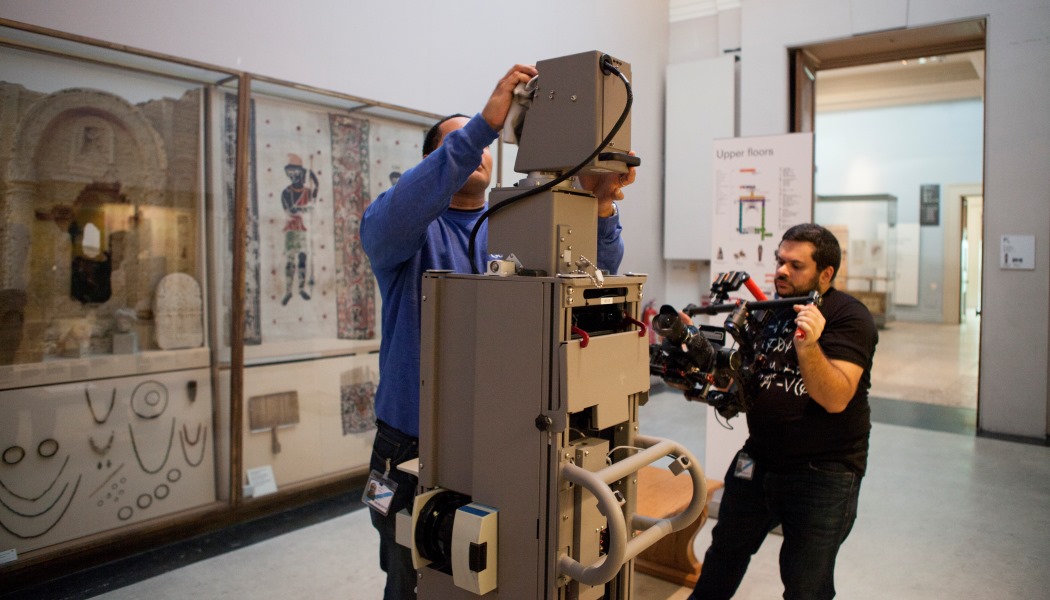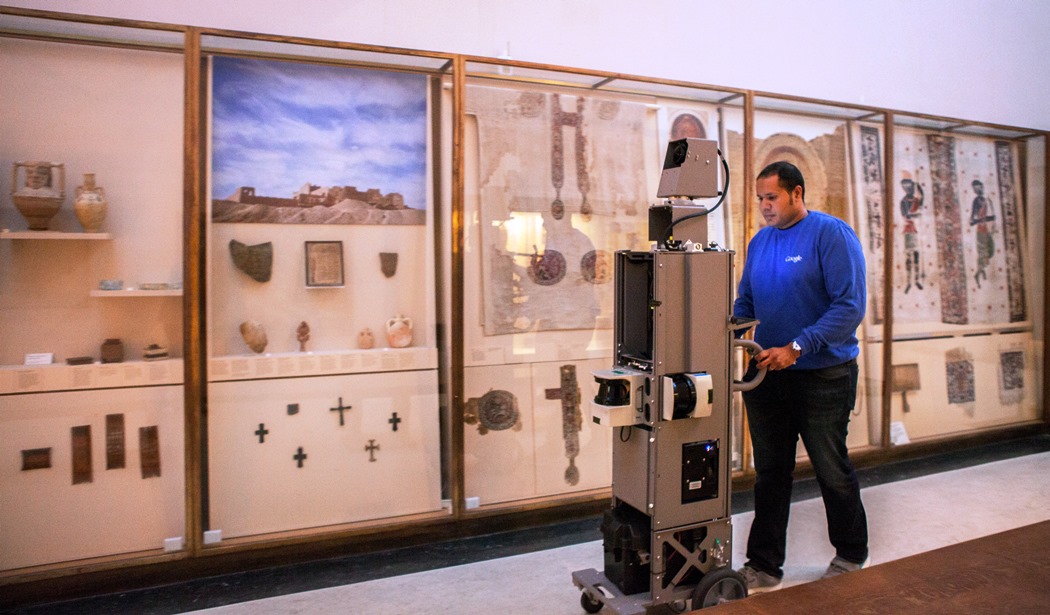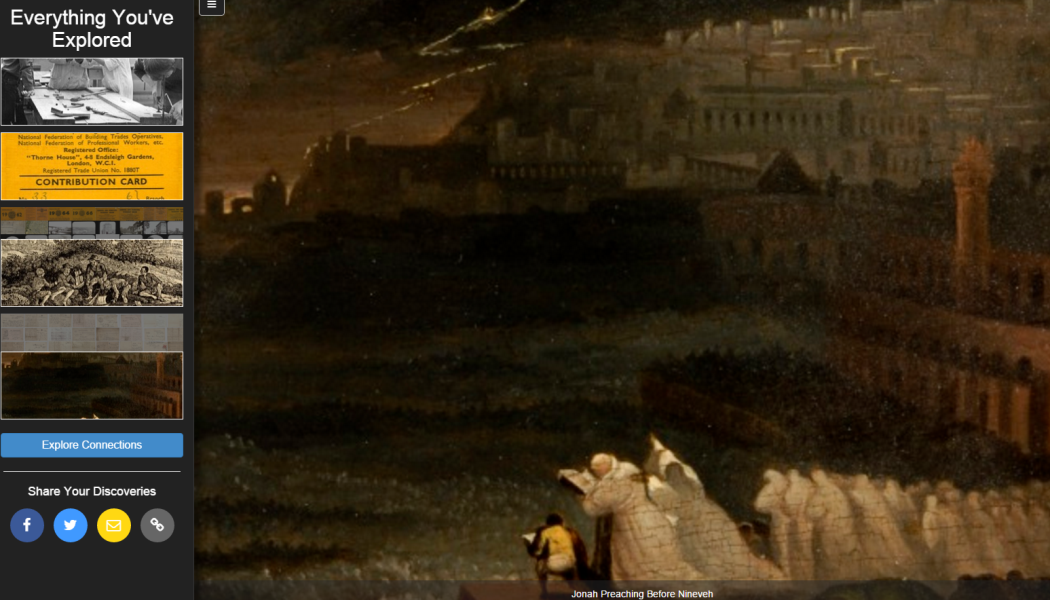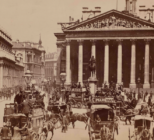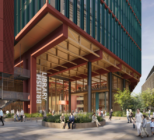With new technologies constantly being developed to capture collections, store them and interpret them online in innovative, user-friendly ways, museums are embracing the potential this offers. The number of items in museum collections is quite often staggering and digitisation projects can often take years to roll out the infrastructure alone – the itemising and populating then becomes an ongoing process.
As these millions of objects and manuscripts are being brought online and integrated into museum websites so digital managers are envisaging how they can be organised and interpreted to best serve their audiences. This has seen the British Museum partner with Google Cultural Institute and Tyne & Wear Archives & Museums team up with Microsoft Research to create imaginative interfaces.
Here we talk to Mia Ridge digital curator, Western Heritage Collections at the British Library and chair of the Museums Computer Group and present four case studies (below) from museums and libraries that are finding new and more advanced ways to capture, store and provide access to their collections online and in some cases conserving them along the way. We also feature in the news section one of the latest and most comprehensive recent digitisation projects, Art UK, which has brought 200,000 of the nation’s oil paintings online. As well as this we have a blog featuring a review of The Oxford Research Centre in the Humanities’ first lecture in a new series What Does it Mean to be Human in the Digital Age?
In a recent essay as part of the University of Leicester’s School of Museum Studies’ Mooc (Massive Open Online Course) Behind the Scenes at the 21st Century Museum, senior lecturer, Ross Parry gave a very brief history of museums and explained that in the past century museums have been trying to burst out of their four walls and in the past quarter of a century engage in outreach.
“So then something fantastic happens in the mid-1990s. And that’s the web,” he says. “For the past 15 years, the web has done some extraordinary things to the way we, not just design exhibitions, but the way we think about the concept of a museum … Digital media has allowed the museum to become everywhere, to become 24 hours, to be connected to all visitors irrespective of their location.”
Through websites museums can reach audiences around the world and with digital technology can capture and store their collections online. According to Mia Ridge the first widely-dispersed digitisation projects began under the New Opportunities Fund (NOF-Digi or NOF-digitise) around 2000 – 2004, although computerised cataloguing and some digitisation projects began earlier.
“Looking back at discussion of the NOF-Digi project on the Museums Computer Group list archives, it seems that many early lessons – the need to manage technical and organisational constraints in order to create audience-friendly interfaces, the value of preservation and interoperable standards, and the ability to make resources discoverable through search engines – may have been forgotten,” she says.
Ridge believes that more recently, social media seems to have given digitised content new life, perhaps, she says, because heritage organisations have learnt to lighten up and allow people to take and share photos, and because they’ve opened up to find new ways to engage people with collections. “Digitised material seems to increase people’s desire to come and ‘see the real thing’, and hopefully it also increases scholarly attention and gets people telling more stories about collections,” she says. “For small museums, digitising and sharing collections might help people realise they exist or remind them to visit, but it does depend on the quality of the overall user experience and whether people can find the website in the first place!”
In this respect Ridge says that because objects and stories are at the heart of heritage collections – anything that helps bring them to audiences helps. “However, ‘collections’ and ‘digitisation’ vary – arguably it’s easier for an artwork to be understood online, where social or technical history objects might need more interpretation,” she says.
A large part of Ridge’s role involves looking ahead to help the British Library understand what scholars might want to do with digital collections in 5-10 years time. The Digital Scholarship team and BL Labs are trying to make already digitised collections more accessible via established and emerging technologies and encouraging curators and researchers to try new digital methods on them. “We also run an internal ‘digital scholarship’ training programme to increase digital research skills across the organisation, as well as public events and social media posts to explore digital methods with our collections,” she says.
As chair of the Museums Computer Group Ridge says the tensions created by changes in technology – changing job roles, making the audience more visible internally – have a big impact on its members. “Technology seems to bring organisational change with it, and audience and funder expectations about what’s ‘innovative’ on the one hand, and ‘normal’ on the other put further pressures on organisations,” she says.
“Funding structures often don’t suit digital projects, which might need to adapt to changes in technology and audience expectations more quickly than a three year funding cycle. The heritage technology field is incredibly generous in sharing ideas and experiences at conferences, in blog posts and on social media, but that experience is still sometimes ignored.”
Ridge believes levels of digital skills and experience are still very unevenly spread across the sector, and sometimes this leads to technology-led projects that are possibly not appropriate to meet audience-focused or collections-led goals. There is also the matter of copyright and licensing laws, which can be complicated. “Expertise may not be as widely available as it would be in an ideal world,” she says.
Previous In Focus Features
A trained and skilled workforce is something that every sector needs and the cultural sector is no exception. But how it trains its new recruits, whether they be students, apprenticeships, trainees or volunteers is always evolving and always up for debate
Technology in Museums: making the latest advances work for our cultural institutions
Technology in museums is something that is becoming increasingly familiar as curators and designers attempt to harness the latest developments in the field for the benefit of their visitors and collections
Income generation: developing cultural enterprises in museums and heritage attractions
Museums across the country are continuing to be resourceful and by becoming more business-like in their approach to income generation they are creating robust cultural enterprises
Accessibility in museums: creating a barrier-free cultural landscape
Accessibility to museums and their collections is a pursuit that is taken seriously by the majority of institutions. But are they getting it right and what new initiatives are being set up to improve things?
Temporary and Touring Exhibitions: Reaching out to new audiences
M+H Advisor talks to the Touring Exhibitions Group and presents five case studies from museums that have created, or are currently planning, temporary and touring exhibitions
Packing and transporting museum collections – how to get it right
Packing and transporting museum collections is fundamental to museum discovery and requires an intricate process of planning and trust, which requires experts both within and outside of museums
In Focus: collections management – connecting objects and people
Collections are the powerhouse of museums but they are nothing without good management and the engagement of the audience
The balancing act of designing permanent exhibitions
The process of developing an exhibition from concept to realisation requires an enormous amount of planning and research and the aim is to give the best visitor experience possible by using the right amount of technology and design to tell the story
Valuing, insuring and securing collections
From government and museum-led initiatives to specialist companies there is a wealth of expertise catered to the sector that ensures buildings and collections are secure and accessible
3D Printing – re-making the museum
The use of 3D printers by museums has become more common recently with improvements in technology, lower prices and innovative ways to use them both curatorially and entrepreneurially
The Environmental Control of Collections
The environmental control of collections is essential for the upkeep of objects especially where light, humidity and temperature are concerned and is now a fine science with national standards

